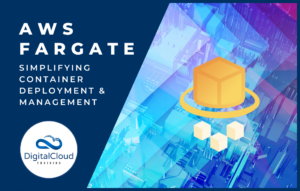CI/CD AWS CodePipeline Automation
Please use the menu below to navigate the article sections:

Consider a scenario where you have to deploy multiple hotfixes to production in a day. If you are deploying your builds manually, there is a high chance there will be an issue in either the code merging, the build preparation, or even the build deployment. You can miss a configuration, deploy an incorrect file, or even deploy it on the wrong server. In the current competitive world, you will not be able to compete with others and will lose your business. This is where CI/CD comes in. CI/CD automates the whole process of code compiling to build preparation to build deployment, and, finally, build testing as well. As soon as you push the code to the repository, the build is automatically compiled, deployed, and tested without any manual intervention. This automation allows companies to deploy multiple product releases daily while maintaining the release quality.
Today we will discuss what CI/CD is, its benefits, and how to use AWS’s codepipeline to automate the process of code compiling and deployment.
What Are CI/CD Pipelines?
Continuous Integration is an automation technique to solve code conflicts arising when different developers’ code is merged. Continuous Integration allows the teams to build workflows capable of compiling rapid code changes, building applications, and testing newer product releases for bugs and errors. If the product revision passes through automation testing, the updates are ready for the next stage of the development process.
After the code is approved as bug-free, it is directly sent to a code repository e.g. Github. Continuous delivery’s goal is to boost communication between the development and operations teams through rapid deployments of production-ready code. Due to the continuous deployment, the operations team can deploy stable releases at short intervals.
What do CI/CD Pipelines do?
A CI/CD pipeline automates the code integration and delivery process. It builds the code, runs automation tests, and deploys a new software version. As soon as a developer merges code into the code repository, the CI/CD pipeline is activated, and it compiles and deploys the build with the latest code. CI/CD pipeline eliminates manual errors, allows quick feedback to cross-functional teams, and results in rapid product iterations.
CI/CD pipeline brings automation and continuous monitoring throughout a product’s lifecycle. A CI/CD pipeline involves the Integration of code, then the testing phase, and finally, delivery and deployment.
What are the benefits of CI/CD Pipelines?
CI/CD pipeline brings a lot of benefits to businesses. Some of the benefits are:
- Gain a competitive edge in the market through rapid product releases
- Reduce the time to market the product
- Allows you to collect customer feedback much faster
- Eliminates manual errors
- Reduces labor and costs
- Improves code quality
- The product is more reliable due to automation tests
- Allows developers to know what changes in the build can break the code and avoid them in the future.
- Developers can focus on writing business requirements instead of worrying about the deployment and build issues
- QA, product teams, and other stakeholders have easy access to the latest version of the product
- Reverting back to a previous build in the event of a problem is a routine push-button action
- A fast feedback loop helps an organization bring a culture of learning and responsibility
What are the use cases for CI/CD Pipelines?
Modern agile software development needs CI/CD workflow
Modern software development is highly agile, and the rapidly evolving market requires quick product iterations. This is contrary to traditional waterfall-based development, where the product was released after a gap of many months. With agile-based software development, automation is the key and using CI/CD with software release cycles can cut release frequency to 3 to 4 weeks instead of 6 to 12 months.
Running regular QA tests on builds
No CI/CD is complete without automation tests. While manual tests are also important, automated tests are the only way to take the benefits of CI/CD. Often, organizations automate periodic testing using servers dedicated to QA tests for multiple projects. When a build is compiled, a set of automation tests is executed upon the new build. If any tests are failed, the team is notified about the test case failure, and the build is automatically rolled back. You can also schedule deployments to your test servers at a designated time, which automatically triggers the automation tests to execute without compromising your established access controls or needing a team member’s intervention.
You want to maximize customer satisfaction with DevOps
Many retail startups have initiated building digital platforms for their businesses in the recent past. However, they are often unable to tap into the expected potential due to traditional manual software release processes. At the same time, market dynamics change rapidly, and it is not easy to meet customer satisfaction using old-fashioned ways of the software release process. CI/CD resolves this issue by releasing code daily or weekly with DevOps. Product quality is significantly improved because of automation test cases and resulting in increased customer satisfaction. With CI/CD, debugging and fixing issues is at its best during product development, which makes continuous monitoring and testing less time-consuming.
You want to create a Secure Software Development Lifecycle (SDLC)
Securing your application from bad actors is an inevitable aspect of software development life cycle. Every day, hackers find unique ways to penetrate your application. CI/CD process not only takes care of scanning build artefacts upon each code push, but you can also run frequent, thorough security scans at regular intervals. The security tests are built right into the CI/CD workflow. Different SAST tools, container scanning tools, and vulnerability tests can be integrated into the CI/CD pipelines so that the security tools verify every code change, whenever the code is compiled or the build is deployed. The process of security scanning is automatic, so a lot of errors due to manual intervention are automatically removed.
How to automate CI/CD With AWS CodePipeline
Enumerate the steps
Let’s go through the steps to create a code pipeline. To get started, you need to have the following as prerequisites:
- GitHub Account
- AWS Account
- Source Code
Step 1: Create an S3 bucket and allow public access to it
Step 2: Go to AWS console and create a new codepipeline as below:
Enter the pipeline name and the role name. Click next to move to next screen.

Step 3: Link your github repository with the codepipeline. Select the Github version 2 and click on the button “Connect to github”. Here, a new popup will open where you will be entering your github credentials. After successfully logging into github, you will select the repository and branch name. Then click next to move to the next stage.

Step 4: On the build stage, select “AWS Codebuild” as your build provider. However, you can select any other build provider as well. Then click on “Create Project” to create a new build project. Specify the OS, runtime, service role, environment image, and image version on this screen. After specifying this detail, click “Continue to pipeline”.

Step 5: The next stage is the deploy stage. Here you will mention Amazon S3 as deploy provider because the build will be deployed to S3 bucket. You will select the S3 bucket for build deployment. S3 bucket allows static web hosting, so the build will be deployed to S3, and the project will be accessible from S3 URL.

Step 6: Click “Next” And then click “Create pipeline”.

Step 7: Now, your pipeline is created. Access your website through the S3 bucket URL, and you will see your project up and running.
Step 8: Make any modifications in your code and push your code. As soon as you push your code, the pipeline will trigger and will deploy the latest build on S3, and if you refresh your browser, you will see the updated website.
Best practices when automating CI/CD with Codepipeline
- Keep your CI/CD secure. Track logins, use SAST tools, and scan the code for vulnerabilities
- Use a combination of manual and automation testing. Integrate CI/CD pipeline with automation test suite
- Commit the code on a daily basis, reduce branching, and aim for small commit sizes
- You should build only once instead of building at every stage. Build once, run everywhere
- Test the code in the early stages instead of testing after the deployment
- Fail fast. As soon as code breaks due to a code push, immediately rollback and get the issues fixed
- Preferably use trunk-based development. Keep your branches short, and merge into the trunk as fast as possible
- If you create a pipeline or action configuration that uses API keys or secrets, use the secrets manager to reference the secret in the pipeline and action configuration. Do not specify secrets directly inside the action configuration
- If you use codepipeline that uses an S3 bucket, then you must configure server-side encryption for that S3 bucket using AWS KMS keys
Conclusion
Today, we delved into AWS CodePipeline, a comprehensive CI/CD service offered by Amazon Web Services. This service automates the entire process of code compilation and deployment, enabling you to deploy multiple updates with ease and efficiency. With AWS CodePipeline, you can streamline your development process and ensure seamless and consistent delivery of your applications.
Learn how to Master the AWS Cloud
Check out our AWS training courses that will help you achieve AWS certifications and equip you with in-depth skills and knowledge:
- Membership – For unlimited access to our entire cloud training catalogue, get enrolled in our monthly/ annual membership program.
- Challenge Labs – Gain hands-on cloud skills in a secure sandbox environment. Learn, build, test, and fail forward without risking unexpected cloud bills.
- AWS Training – Our popular AWS training will maximize your chances of securing your AWS certification on the first attempt.





Responses